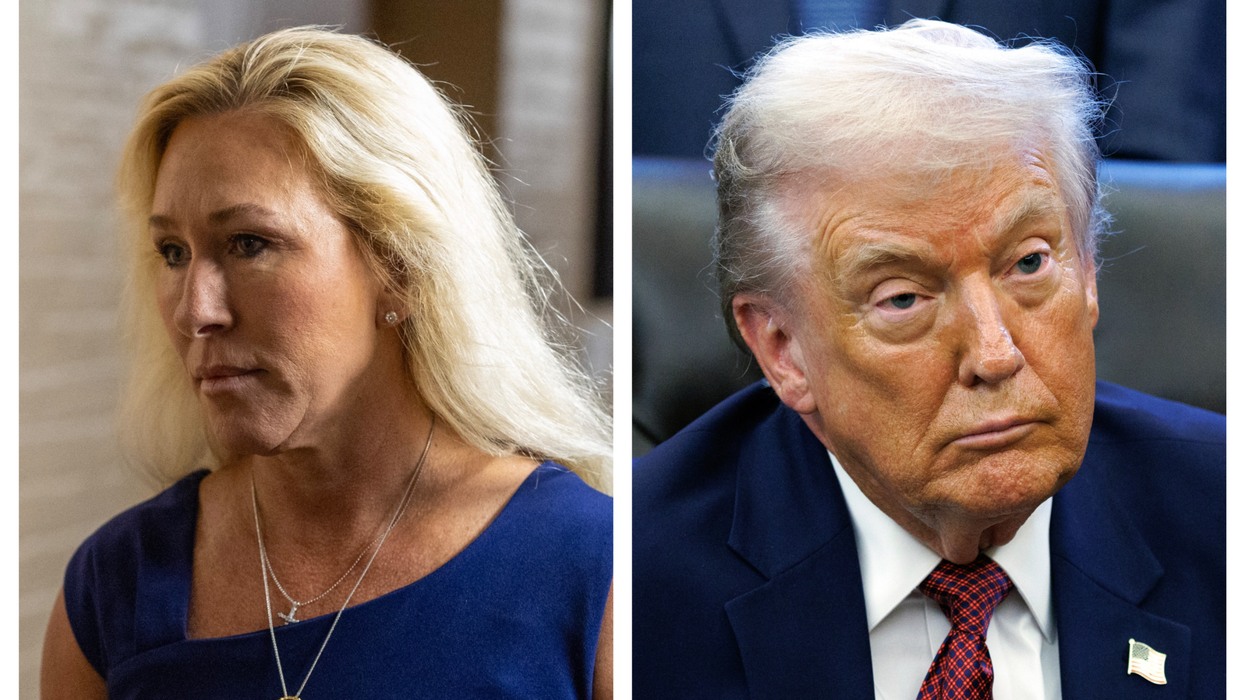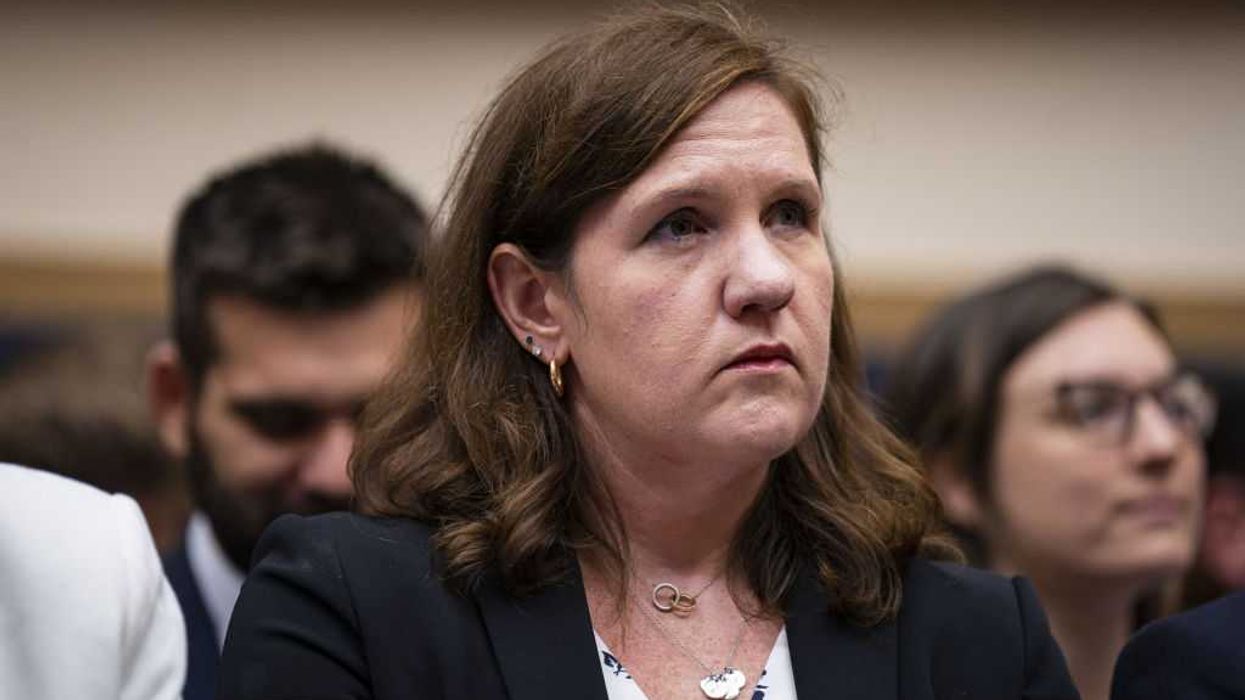© 2025 Blaze Media LLC. All rights reserved.
NYT Climate Change Article, Reporter Blasted by 'Dissenters' -- Here's Why They're Upset
May 03, 2012
"officially reduced himself to the equivalent of a newsletter writer for climate pressure groups"
Let's start this story here: there are "warmists" and "alarmists" or there are "dissenters" and "skeptics." Warmists/alarmists are terms used by those who don't believe global warming is man-made -- and they use the terms to describe groups who do and advocate for action to curb it. Dissenters/skeptics are terms used by those who believe there is enough scientific evidence to support man-made climate change -- and they use the terms to describe others who are in "denial."
Now that we have those definitions out of the way, here's the latest in the warmist vs. dissenter battle. A story published on Monday in the New York Times has some -- who would most likely be labeled as dissenters by warmists -- lambasting its publication and the author as being "profoundly dishonest."
The topic of Justin Gillis' article in the Times is about a group of "scientific dissenters" who believe the effect of clouds on the environment is relatively uncertain in that they could "shift in such a way as to counter much of the expected temperature rise." Gillis includes information by MIT meteorology professor Richard Lindzen who is described as leading the charge on this theory. He also reports the flip side: that the clouds won't change enough to reverse the effects of global warming.
Here's the crux of Lindzen's theory as reported by Gillis:
Dr. Lindzen says the earth is not especially sensitive to greenhouse gases because clouds will react to counter them, and he believes he has identified a specific mechanism. On a warming planet, he says, less coverage by high clouds in the tropics will allow more heat to escape to space, countering the temperature increase.
With that hopeful prognosis, Gillis points out that some politicians and some organizations like the free-market think-tank The Heartland Institute have welcomed this theory. There is opposition though, including scientific evidence and opinions by climate experts, that clouds will not in fact have a mitigating effect o

n global warming and that computer analysis in climate change research needs to be improved to understand just how clouds will influence the climate.
Much of Gillis' rhetoric throughout the article though is what has some dissenter websites riled. For example, NewsBusters, a product of the conservative Media Research Center, writes "New York Times's confessed climate activist (and journalist) Justin Gillis made Tuesday's front page with a 2,500-word story on what he called the last line of defense for climate change skeptics." The organization culls through Gillis' article emphasizing some of the language it took issue with. Here are a few examples (emphasis added by NewsBusters):
- For decades, a small group of scientific dissenters has been trying to shoot holes in the prevailing science of climate change, offering one reason after another why the outlook simply must be wrong.
- However, politicians looking for reasons not to tackle climate change have embraced Dr. Lindzen and other skeptics, elevating their role in the public debate.
- Among the many climate skeptics who plaster the Internet with their writings, hardly any have serious credentials in the physics of the atmosphere. But a handful of contrarian scientists do. The most influential is Dr. Lindzen.
- Today, most mainstream researchers consider Dr. Lindzen’s theory discredited. He does not agree, but he has had difficulty establishing his case in the scientific literature. Dr. Lindzen published a paper in 2009 offering more support for his case that the earth’s sensitivity to greenhouse gases is low, but once again scientists identified errors, including a failure to account for known inaccuracies in satellite measurements.
NewsBusters writes that Gillis in his article is "nodding" in agreement with "scare-mongering scientists."
Steve Milloy on the blog Junk Science, which states we should be "more worried about the intellectual climate," writes the attacks against Lindzen are unfair given he is "undertaking honest study on the role of clouds in climate." One of the scientists criticizing Lindzen was University of Washington researcher Christopher Bretherton. Milloy writes Bretherton has "a lot of nerve" for questioning Lindzen's "intellecutal honesty." He points out:
About 10 years ago or so, Bretherton pitched the National Science Foundation to form a Climate Process Team (CPT) to research clouds/climate, even highlighting the great uncertainty in cloud understanding.[...]
NSF did indeed fund a CPT project — so far to the tune of about $390 million — though its not clear how much of this Bretherton received.
So Chris, is it “intellectually honest” to sell cloud uncertainties and unknowns to the National Science Foundation and then attack another researcher for doing un-taxpayer funded work on the same issue?
Another dissenting voice is Climate Depot, run by the conservative non-profit Committee for a Constructive Tomorrow (CFACT). It issued a lengthy post attacking Gillis himself, stating he had "officially reduced himself to the equivalent of a newsletter writer for climate pressure groups" with his latest article.
Roger Pielke, Jr., environmental studies professor at the Center for Science and Technology Policy Research at the University of Colorado at Boulder, also questions Gillis' motives. He put together a "laundry list" of the terms used by Gillis to describe Lindzen, calling the piece overall "advocacy journalism." Pielke asks his readers, "Whatever one thinks about the climate change debate or Richard Lindzen, is it a good idea for the New York Times to engage in an over-the-top attack on a member of the National Academy of Sciences? Journalists, what do you think?"
Some commenters support Pielke's thoughts, but he was met by another calling his post "melodramatic" and accusing him of not looking entirely at the facts in some of the "laundry list" he pulled out for the article. But here's how Pielke responds to that:
Thanks for your comment, let me try to make this simple ... for the purposes of our discussion, let me grant the truth of each one of the statements I excerpted. That is not the point of this post.[...]
Since when is it appropriate for a major newspaper to attack an individual scientist? Where is the news here?
Can you give me another example of a major newspaper doing anything similar?
Sure, you expect this sort of thing from Climate Progress or Real Climate, but seriously, the NYT?
It should be noted that Gillis' article appears on the main Science section of the New York Times. It is part of the Times' "Temperature Rising" series, which "focus on the central arguments in the climate debate and examine the evidence for global warming and its consequences." It does not seem to be attributed as a blog or an opinion, but do you think it should have been? Share your thoughts in the comments below.
Read all of Gillis' "Cloud's Effect on Climate Change Is the Last Bastion for Dissenters" here. View more visual information about how clouds can influence the climate from the Times here.
Want to leave a tip?
We answer to you. Help keep our content free of advertisers and big tech censorship by leaving a tip today.
Want to join the conversation?
Already a subscriber?
more stories
Sign up for the Blaze newsletter
By signing up, you agree to our Privacy Policy and Terms of Use, and agree to receive content that may sometimes include advertisements. You may opt out at any time.
Related Content
© 2025 Blaze Media LLC. All rights reserved.
Get the stories that matter most delivered directly to your inbox.
By signing up, you agree to our Privacy Policy and Terms of Use, and agree to receive content that may sometimes include advertisements. You may opt out at any time.






